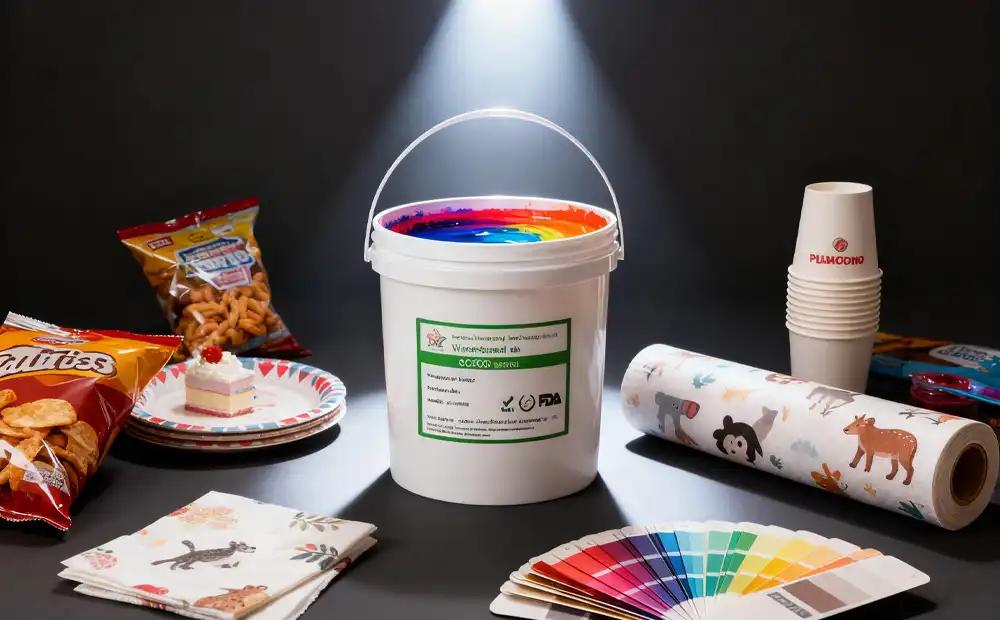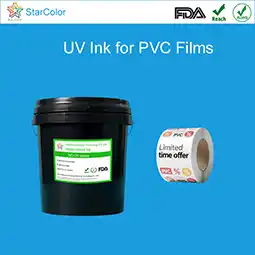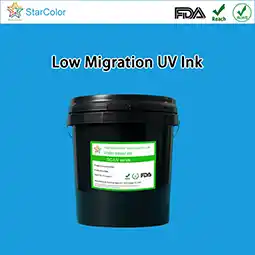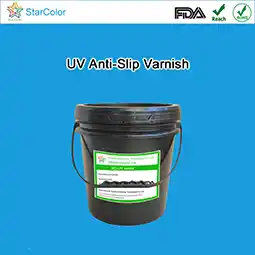A high quality flexographic water-based ink must have the characteristics
Date: Sep 04 2023 From: Star Color Views:
Flexographic water-based inks have become the mainstream choice for eco-friendly printing, widely used in food packaging, personal care labels, and nonwoven fabric printing. However, not all water-based flexo inks meet high-quality requirements — low-grade inks often suffer from issues like poor adhesion, non-compliance with environmental standards, and low printing precision, which can negatively affect productivity and competitiveness.
True high-quality flexographic water-based inks must meet strict standards in adhesion, environmental safety, and print adaptability, ensuring compatibility with a wide range of substrates and printing applications.
1. Strong Adhesion
Adhesion is the “lifeline” of flexographic water-based inks. For non-absorbent substrates like BOPP and PE, achieving strong adhesion requires overcoming low surface tension and poor wettability to ensure lasting ink bonding. High-quality flexo inks must meet two key criteria:
- Wide substrate compatibility: Achieving 4B–5B cross-cut adhesion grades on BOPP, PE, paper, and nonwovens without complex pretreatment.
- Excellent durability: Stable adhesion after friction, heat, and humidity tests.
Technically, this is achieved through a “hybrid resin system + adhesion promoter.” A blend of acrylic–polyurethane resins introduces hydroxyl and carboxyl groups to form hydrogen bonds with substrates, while silane coupling agents enhance interfacial bonding. In one case, a food packaging company using such ink achieved 5B adhesion on BOPP labels, with no peeling after hot filling, reducing defect rates from 12% to 3%.
2. High Environmental Performance
Environmental safety is the core competitive strength of premium flexo inks, particularly for food and pharmaceutical packaging, where global compliance is crucial:
- Low VOC emissions: VOC ≤ 50 g/L (premium products as low as 10 g/L), free of benzene and ketones; emission concentration ≤ 80 mg/m³ without expensive RTO systems.
- Migration-free and safe: Heavy metals ≤ 0.001 mg/kg, specific migration ≤ 0.01 mg/kg; certified by FDA 21 CFR 175.300 and EU 10/2011, suitable for direct food contact.
- Odorless and non-irritating: No residual odor after printing, meeting safety standards for children’s and near-face applications like masks.
3. Excellent Print Adaptability
High-quality flexographic water-based inks must perform consistently under high-speed printing and fine pattern applications, avoiding dot gain or uneven color:
- Superior color performance: Uniform pigment dispersion, clear halftones at 150 LPI, dot gain ≤ 8%, color difference ΔE ≤ 0.8, and precise Pantone matching.
- Stable rheology: Viscosity of 25–35s, no layering or sedimentation after 24 hours, ensuring even ink transfer without streaks or missing prints.
- Fast drying: Fully dry within 2–3 seconds at 40–60°C, ideal for high-speed lines with no blocking or offsetting.
In one creative printing case, such ink was used for 120-line planner designs, achieving sharp dots and 20% higher color saturation, increasing daily output from 300,000 to 450,000 books.
4. Strong Resistance
Flexographic water-based inks must withstand complex environments during transport, storage, and use. Key performance indicators include:
- Chemical resistance: Resistant to alcohol, acids, and alkalis — ideal for beverage and condiment labels.
- Friction and scratch resistance: Incorporating 3–5% micronized PE wax (particle size 3–5 μm) reduces friction coefficient from 0.6 to 0.3 and exceeds 600 abrasion cycles without color loss.
- Lightfastness: Maintains ΔE ≤ 2.5 after 60 days of outdoor exposure without fading or chalking — suitable for agricultural and outdoor packaging.
5. Broad Substrate Compatibility
Premium flexo water-based inks reduce production changeovers by adapting to diverse substrates without constant reformulation:
- Non-absorbent substrates: BOPP, PE, PET — excellent adhesion achieved by adjusting anilox roll (800–1000 lines).
- Absorbent substrates: Paper, kraft paper, nonwoven fabrics — control ink film thickness (8–12 μm) to prevent show-through.
- Special substrates: Aluminum foil, glassine paper — add specific adhesion promoters to enhance bonding and oxidation resistance.
6. Excellent Stability
High-quality flexo inks must ensure batch consistency and long-term storage stability to prevent color deviation or degradation:
- Batch consistency: Viscosity and color deviation ≤ 5% between batches, ensuring color uniformity in mass production.
- Long shelf life: Stable for 6 months in cool storage without layering or coagulation; ready for use without complex adjustments.
- Anti-freeze performance: No performance loss after freezing at -5°C and thawing — ideal for cold-climate production.
One restaurant chain using such inks for year-round takeaway labels maintained color consistency across 12 batches, boosting brand recognition by 25%.
Conclusion
The six core features of high-quality flexographic water-based inks reflect the balance between production efficiency, product quality, and environmental compliance. When selecting inks, manufacturers should prioritize adhesion, eco-friendliness, and print adaptability — then verify durability and stability through small-scale tests.
High-quality flexographic water-based inks have become essential for the printing industry — helping businesses reduce environmental costs, enhance competitiveness, and access premium markets like food and pharmaceuticals. Choosing inks with true technical integrity is the key to sustainable growth.
 RU
RU EN
EN CN
CN















